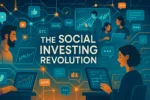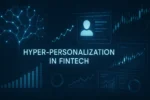For years, the promise of financial technology was centered on access and efficiency—making it cheaper and easier for individuals to participate in the global markets. In 2025, however, the frontier of innovation has shifted toward a new, more ambitious goal: hyper-personalization.
Fueled by advancements in artificial intelligence and big data analytics, fintech platforms are moving beyond a one-size-fits-all approach and are beginning to offer deeply customized experiences, products, and insights tailored to an individual’s unique financial situation, risk tolerance, and behavioral patterns. This trend is not just about a more user-friendly interface; it’s about creating a dynamic, adaptive financial partnership that actively helps users achieve their goals.
AI-driven insights and personalized education
One of the most powerful applications of hyper-personalization is in the realm of financial education and market insights. Instead of providing generic market commentary, modern platforms are using AI to analyze a user’s trading history, portfolio composition, and even their browsing behavior within the app to deliver highly relevant content.
For example, a user who primarily trades tech stocks and has shown an interest in renewable energy might receive a curated newsfeed and in-depth reports on the clean energy sector. If the platform detects that a user is consistently making a specific trading mistake, such as holding onto losing positions for too long, it can proactively offer educational modules on risk management and trading psychology. This creates a personalized learning journey that addresses a user’s specific weaknesses and helps them grow as a trader.
Customized risk profiling and automated strategies
Hyper-personalization is also revolutionizing risk management. Traditional risk tolerance questionnaires are often static and simplistic. Modern platforms, however, can build a dynamic risk profile by observing a user’s actual behavior. The system can analyze how a user reacts during periods of market volatility: do they panic-sell, or do they hold steady? This behavioral data allows the platform to create a much more accurate and nuanced understanding of an individual’s true risk appetite.
This, in turn, allows for the creation of customized investment products and automated strategies. A user with a low-risk profile might be offered an AI-managed portfolio that prioritizes capital preservation, while a more aggressive trader could be given access to sophisticated algorithmic strategies. The ability to offer a range of tailored account types is a key part of this new, personalized approach.
The rise of conversational AI and “Financial Co-Pilots”
The user interface itself is becoming more personalized. The rise of advanced large language models (LLMs) is leading to the development of conversational AI “co-pilots” within financial apps. Users can interact with these AI assistants using natural language, asking complex questions like, “What is my current exposure to the semiconductor industry across all my accounts?” or “Simulate the impact of a 10% drop in the price of oil on my portfolio.”
These AI co-pilots can provide instant, data-driven answers, act as a sounding board for new trading ideas, and even offer behavioral nudges to help users stick to their financial plans. The goal is to create a more intuitive and supportive user experience, transforming the trading platform from a simple execution tool into a genuine financial partner.
The future of financial services
The trend toward hyper-personalization is redefining user expectations across the financial industry. From banking to investment, consumers are beginning to demand services that understand them as individuals.
Leading fintech companies and modern brokerages like the YWO online broker are at the forefront of this shift, leveraging cutting-edge fintech solutions for finance to build these deeply personalized experiences. As this technology continues to evolve, the line between a financial platform and a personal financial advisor will continue to blur, creating a future where institutional-grade insights and customized guidance are accessible to everyone.



